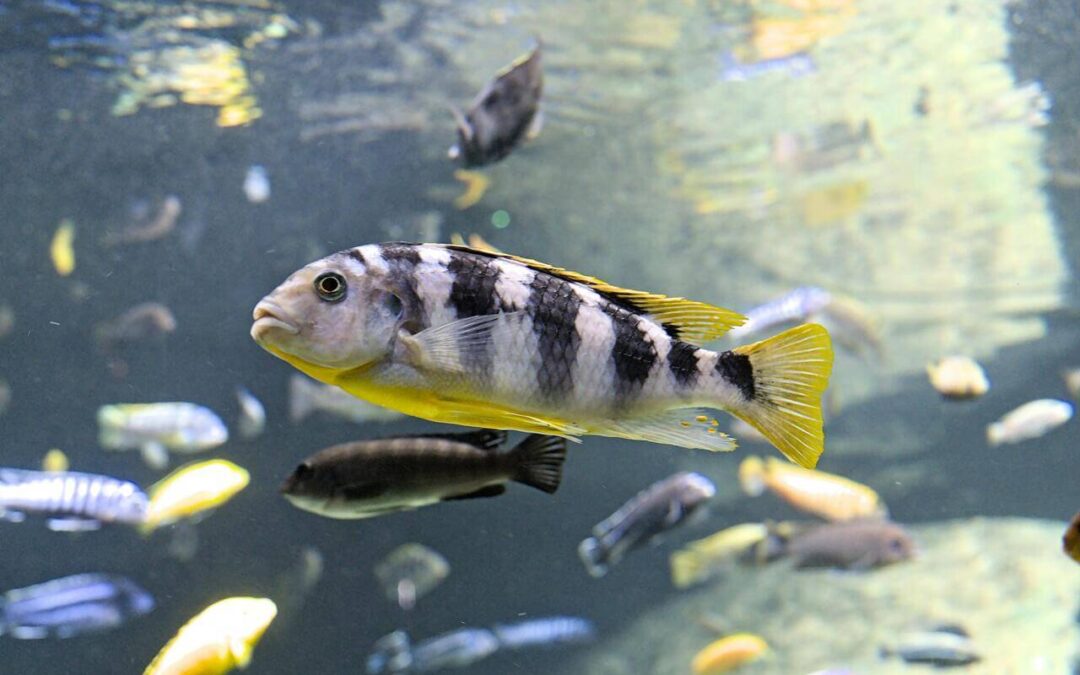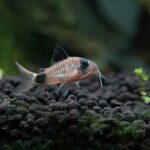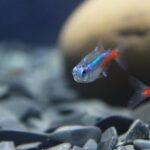Freshwater cichlids are the fish that add life to an aquarium; many just float along, but these fish explore, dig, and even reorganize their environment, with some owners claiming their cichlids know when it is time to feed! With the bold personality of oscars, the graceful glide of angelfish, and the dazzling blues of African cichlids, there is no other fish that will bring an aquarium to life like a freshwater cichlid!
Cichlids amazing diversity is one of the things that makes them so fascinating. More than 1350 species are known to exist each suited to a distinct environment and found in Africa parts of Asia and Central and South America. However they are distinguished by more than just their colors. Its surprising how social and intelligent cichlids are. They mark out areas identify patterns and even create intricate hierarchies inside the tank. Certain animals exhibit complex courtship customs or problem-solving abilities that make them fascinating to observe. To put it briefly cichlids give your aquarium life in addition to color.
General Characteristics of Freshwater Cichlids
1. Diversity and Distribution
Cichlids come in all shapes, sizes, and colors. Their natural habitats range from the clear waters of Lake Malawi and Lake Tanganyika in Africa to the murky rivers of the Amazon Basin in South America. This wide distribution has led to an incredible variety of species — each with unique adaptations and appearances.
2. Behavior and Personality
If you’ve ever owned a cichlid, you know they’re far from ordinary. These fish are intelligent and interactive, often recognizing their owners and even showing distinct personalities. Some can be shy and curious, while others are bold and territorial.
Many cichlids display complex social structures, forming hierarchies within their tanks. During breeding, pairs often exhibit impressive rituals, such as cleaning spawning sites and guarding their fry with surprising devotion.
3. Appearance and Coloration
One of the main reasons cichlids are so popular is their vibrant coloration. From the iridescent blues of the Electric Blue Hap to the fiery reds of the Firemouth Cichlid, their hues can rival even saltwater species. These bright colors often signal health, dominance, or breeding readiness.
4. Lifespan and Commitment
Cichlids aren’t short-term pets — many species live 8 to 15 years, with some reaching over two decades under proper care. This longevity makes them a long-term commitment, ideal for aquarists who want to form a lasting connection with their fish.
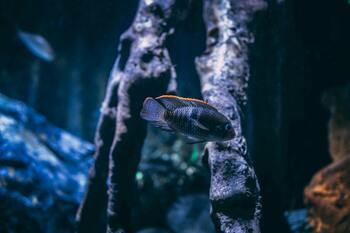
Types of Freshwater Cichlids
1. South American Cichlids
These cichlids hail from the slow-moving rivers and floodplains of the Amazon and surrounding regions. They’re often known for their elegance and complex social behavior.
- Angelfish – Graceful and triangular-shaped, these fish are relatively peaceful but can become territorial during breeding.
- Discus – Known as the “king of the aquarium,” discus fish are among the most beautiful and demanding species, requiring pristine water conditions.
- Oscar – Big, bold, and intelligent, oscars are known to interact with their owners and even learn to take food by hand. They can grow up to 12 inches, so a large tank (at least 75 gallons) is essential.
2. African Cichlids
African cichlids are famous for their dazzling colors and energy. They mainly originate from Lake Malawi, Lake Tanganyika, and Lake Victoria, each home to hundreds of unique species.
- Lake Malawi Cichlids – Includes the Electric Blue Hap and Yellow Lab, prized for their striking hues and active personalities.
- Lake Tanganyika Cichlids – Known for fascinating behaviors and diverse body shapes, including shell dwellers like the Neolamprologus multifasciatus, which use snail shells for shelter.
- Lake Victoria Cichlids – Often smaller but equally colorful, with species adapted to varying water conditions.
African cichlids tend to be more aggressive and territorial, so they’re best kept with other robust species in large, rocky setups that mimic their natural environment.
3. Dwarf Cichlids
If you love cichlids but have limited space, dwarf varieties are a perfect option.
- Apistogramma – These small South American cichlids are colorful, intelligent, and fascinating to observe. They do best in soft, slightly acidic water.
- Bolivian Ram and German Blue Ram – Peaceful and beautifully colored, these make excellent additions to community tanks with calm tank mates.
4. Popular Individual Species
- Jack Dempsey – A large, aggressive cichlid known for its shimmering blue-green scales. It’s not for beginners but offers a bold display.
- Severum – A gentle giant among cichlids, Severums are peaceful, colorful, and ideal for intermediate keepers.
- Firemouth Cichlid – Recognizable by its bright red “throat,” this fish is territorial and needs a spacious tank.
- Neon Jewel Cichlid – A radiant species with jewel-like iridescence, often used to brighten aquariums.
- Polar Blue Parrot Cichlid – A hybrid between the Convict and Blood Parrot Cichlid, known for its unique round body and electric blue coloration.
Caring for Freshwater Cichlids
1. Tank Size and Setup
Because most cichlids are territorial, tank size is crucial. A single adult oscar may need a 75-gallon tank, while smaller species like Apistogramma can thrive in 20–30 gallons.
Provide plenty of hiding spots, such as caves, driftwood, and rocks. These not only reduce aggression but also mimic their natural environments. For African cichlids, rocky setups with sandy substrates work best.
2. Water Parameters
Cichlids prefer stable water conditions, but exact needs vary by species.
- African cichlids: pH 7.8–8.6, temperature 76–82°F
- South American cichlids: pH 6.0–7.5, temperature 74–80°F
Regular water changes and good filtration are essential to maintain high water quality, as cichlids can be messy eaters.
3. Diet and Feeding
Cichlids are omnivorous, meaning they eat both plant and animal matter. A balanced diet should include:
- High-quality cichlid pellets or flakes
- Frozen or live foods (like bloodworms, brine shrimp, or krill)
- Fresh vegetables like spinach or peas for plant-eating species
Avoid overfeeding — cichlids are opportunistic and will often act hungry even when they’re full!
4. Tank Mates and Aggression
Cichlids are known for being territorial, especially when breeding. Always research compatibility before mixing species.
Good tank mates (depending on size and temperament) include larger catfish, plecos, or robust tetras. Avoid smaller, delicate fish that might become targets.
5. Breeding and Behavior
Cichlid breeding is a rewarding experience. Many species are egg layers that fiercely guard their young. Watching them clean spawning sites, fan their eggs, and protect fry offers a fascinating glimpse into their intelligence and parental care.
Why Aquarists Love Cichlids
Cichlids appeal to fishkeepers because they’re more than just decorative. They’re interactive, expressive, and surprisingly smart. Many owners describe their cichlids as having “personalities” — some beg for food, rearrange tank decorations, or even respond to their owners’ presence.
While they can be challenging due to their territorial behavior, the rewards of keeping cichlids are immense. With proper care, they’ll provide years of lively interaction and natural beauty.
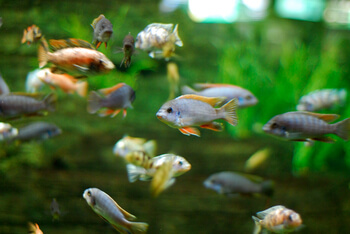
Frequently Asked Questions (FAQs)
1. Are freshwater cichlids good for beginners?
Some species, like Severums and dwarf cichlids (Apistogramma, Rams), are beginner-friendly. However, others — especially large or aggressive types — are better suited for experienced aquarists.
2. How big do cichlids get?
Sizes vary widely. Dwarf cichlids may only reach 3 inches, while oscars and larger African cichlids can grow over 12 inches.
3. Do cichlids need special water conditions?
Yes. African cichlids prefer harder, alkaline water, while South American cichlids thrive in softer, slightly acidic water.
4. Can I mix African and South American cichlids?
It’s not recommended. They have different water requirements and temperaments, which can cause stress or aggression.
5. How long do cichlids live?
Most cichlids live between 8 to 15 years, though some can surpass 20 years with excellent care.
Final Thoughts
Freshwater cichlids bring color, intelligence, and charisma to any aquarium. With their diverse species, fascinating behaviors, and strong personalities, they’re more than just ornamental fish — they’re engaging companions that make your aquarium truly come alive. Whether you start with a peaceful Severum or a bold African cichlid, one thing is certain: life with cichlids is never boring.

